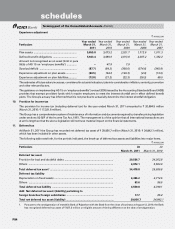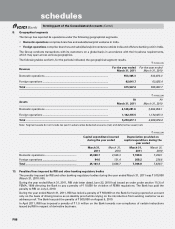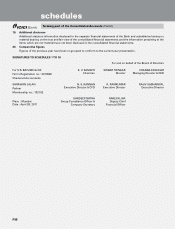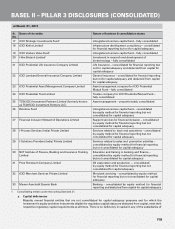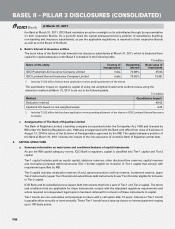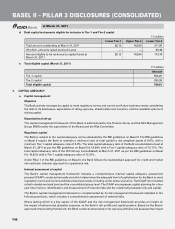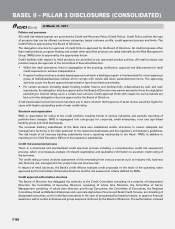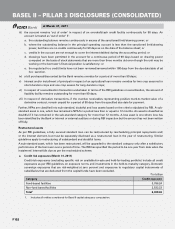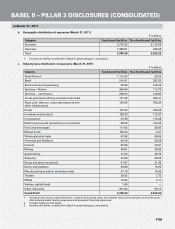ICICI Bank 2011 Annual Report Download - page 172
Download and view the complete annual report
Please find page 172 of the 2011 ICICI Bank annual report below. You can navigate through the pages in the report by either clicking on the pages listed below, or by using the keyword search tool below to find specific information within the annual report.
F94
the Bank at March 31, 2011. ICICI Bank maintains an active oversight on its subsidiaries through its representation
on their respective Boards. On a periodic basis the capital adequacy/solvency position of subsidiaries (banking,
non-banking and insurance subsidiaries), as per the applicable regulations, is reported to their respective Boards
as well as to the Board of the Bank.
b. Bank’s interest in insurance entities
The book value of the Bank’s total interest in its insurance subsidiaries at March 31, 2011, which is deducted from
capital for capital adequacy under Basel II is detailed in the following table.
` in billion
Name of the entity Country of
incorporation
Ownership
interest
Book value of
investment
ICICI Prudential Life Insurance Company Limited India 73.88% 35.94
ICICI Lombard General Insurance Company Limited India 73.55% 13.481
1. Includes ` 2.52 billion held as share application money pending allotment of the shares.
The quantitative impact on regulatory capital of using risk weighted investments method versus using the
deduction method at March 31, 2011 is set out in the following table.
` in billion
Method Quantitative impact1
Deduction method 49.42
Capital at 9% based on risk weighted assets 4.45
1. Includes ` 2.52 billion held as share application money pending allotment of the shares in ICICI Lombard General Insurance
Company.
c. Amalgamation of The Bank of Rajasthan Limited
The Bank of Rajasthan Limited, a banking company incorporated under the Companies Act, 1956 and licensed by
RBI under the Banking Regulations Act, 1949 was amalgamated with the Bank with effect from close of business of
August 12, 2010 in terms of the Scheme of Amalgamation approved by the RBI. The capital adequacy position of
the Bank at March 31, 2011 includes the impact of the risk exposures of erstwhile Bank of Rajasthan at that date.
2. CAPITAL STRUCTURE
a. Summary information on main terms and conditions/features of capital instruments
As per the RBI capital adequacy norms, ICICI Bank’s regulatory capital is classified into Tier-1 capital and Tier-2
capital.
Tier-1 capital includes paid-up equity capital, statutory reserves, other disclosed free reserves, capital reserves
and innovative perpetual debt instruments (Tier-1 bonds) eligible for inclusion in Tier-1 capital that comply with
requirement specified by RBI.
Tier-2 capital includes revaluation reserves (if any), general provision and loss reserve, investment reserve, upper
Tier-2 instruments (upper Tier-2 bonds) and subordinate debt instruments (lower Tier-2 bonds) eligible for inclusion
in Tier-2 capital.
ICICI Bank and its subsidiaries have issued debt instruments that form a part of Tier-1 and Tier-2 capital. The terms
and conditions that are applicable for these instruments comply with the stipulated regulatory requirements and
where required an independent legal opinion has been obtained for inclusion of these instruments in capital.
Tier-1 bonds are non-cumulative and perpetual in nature with a call option after 10 years. Interest on Tier-1 bonds
is payable either annually or semi-annually. These Tier-1 bonds have a step-up clause on interest payment ranging
up to 100 basis points.
BASEL II – PILLAR 3 DISCLOSURES (CONSOLIDATED)
at March 31, 2011


